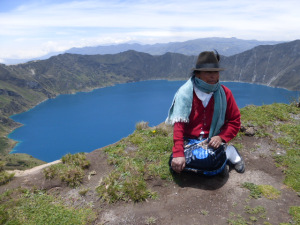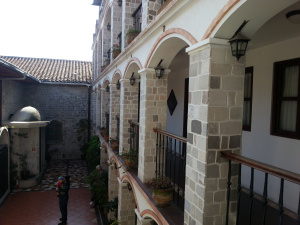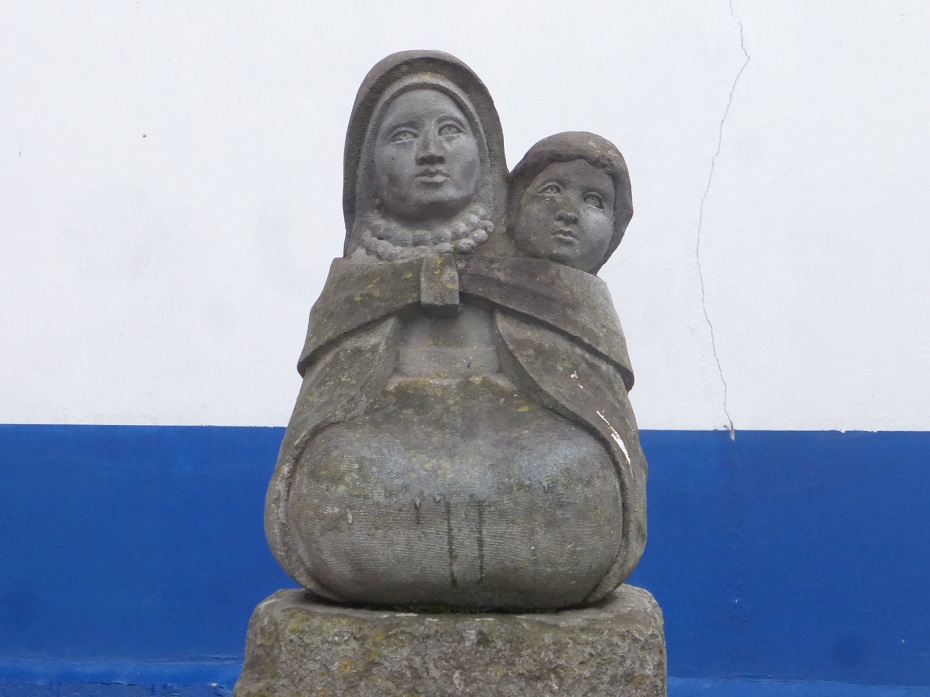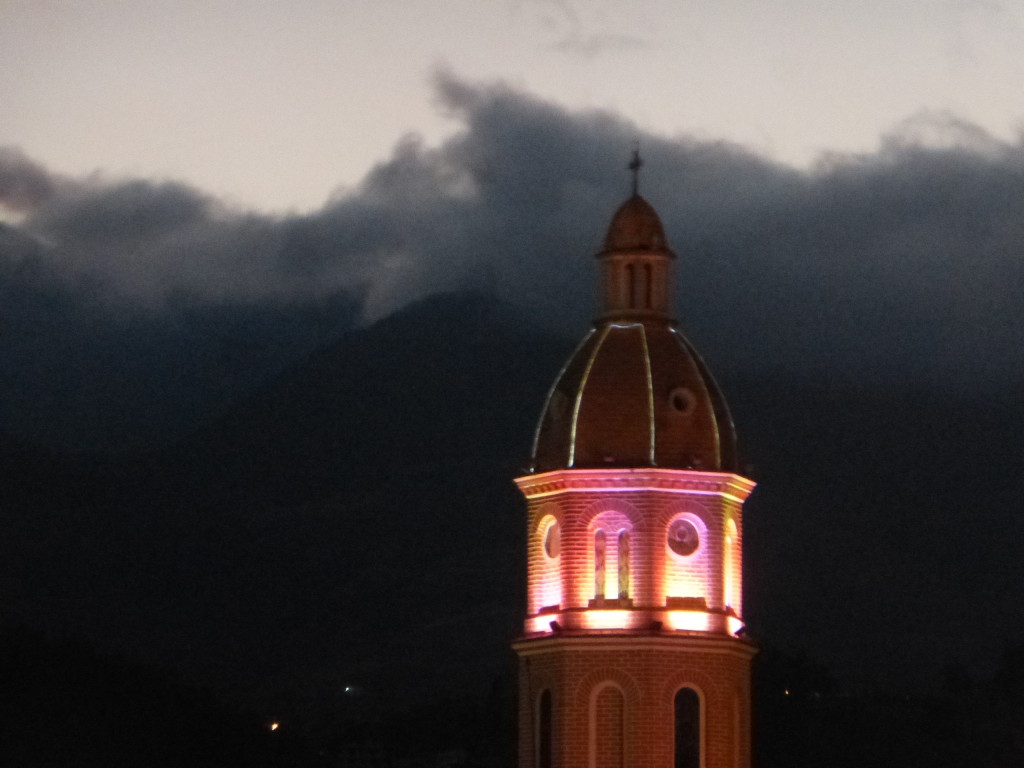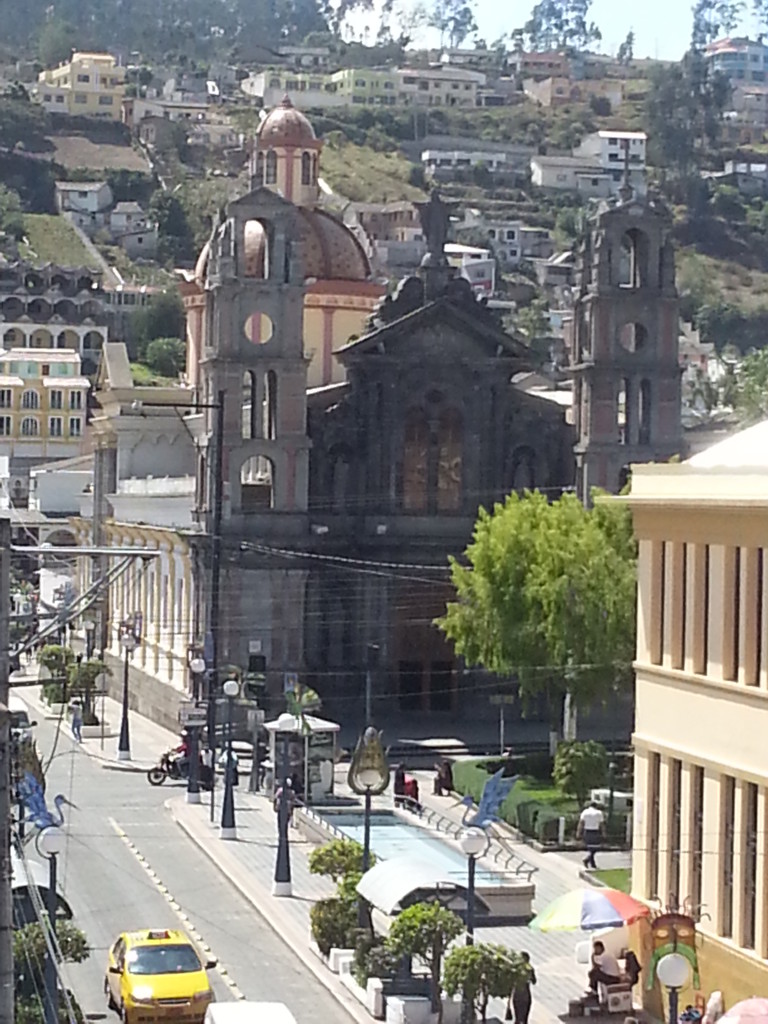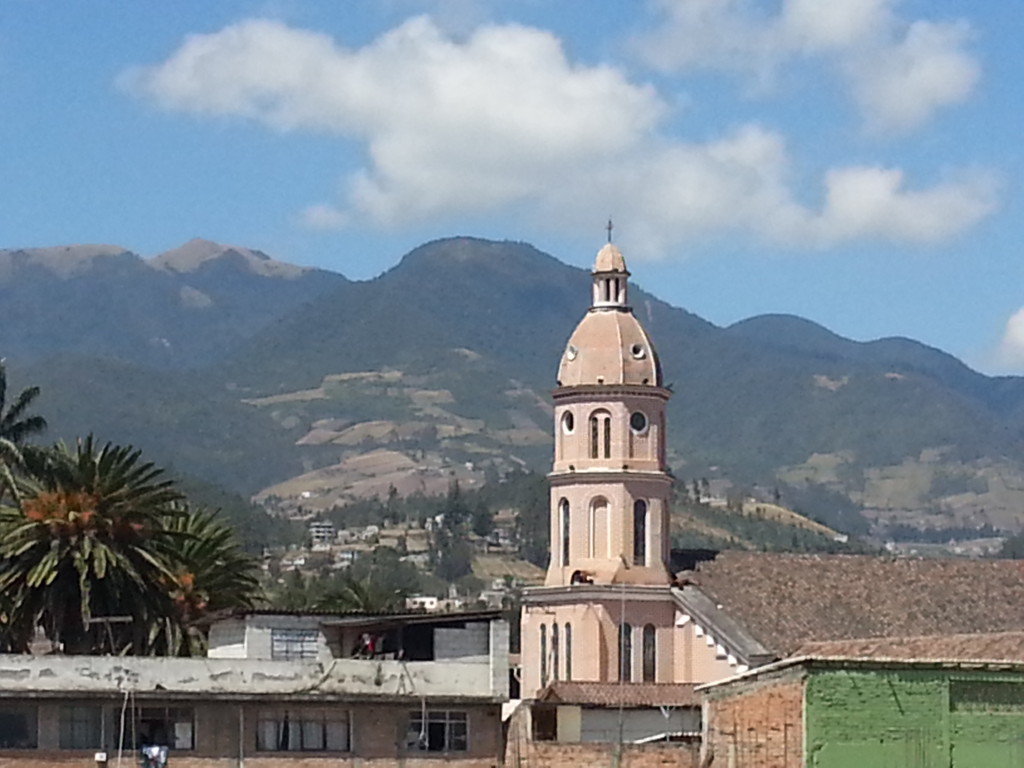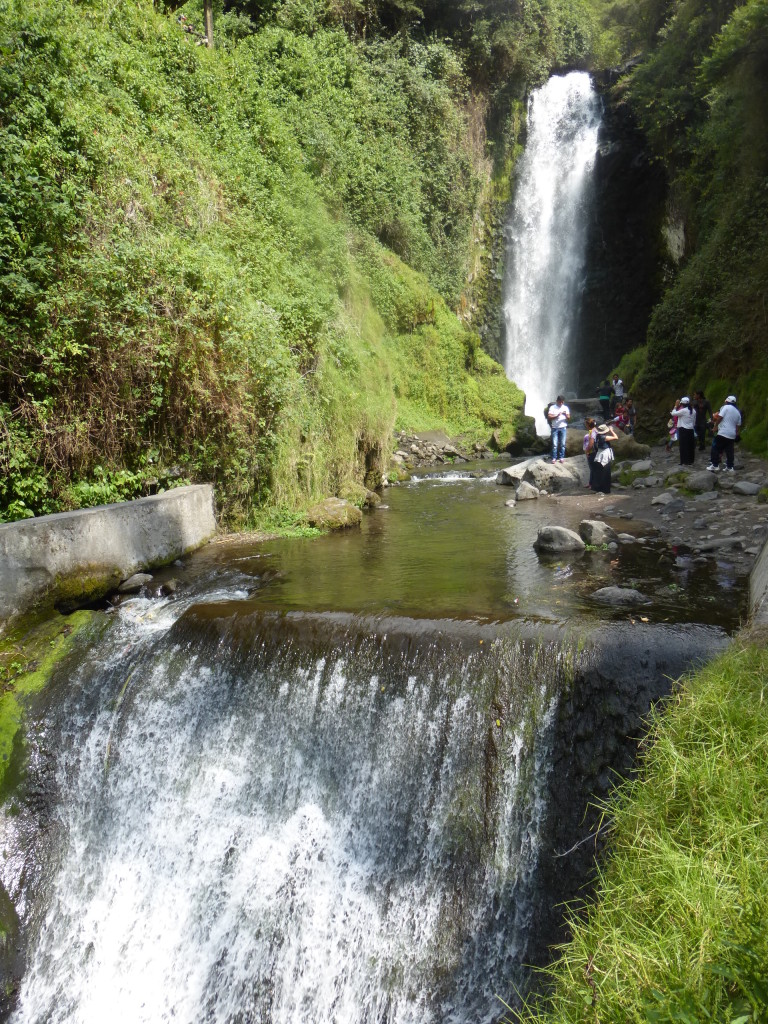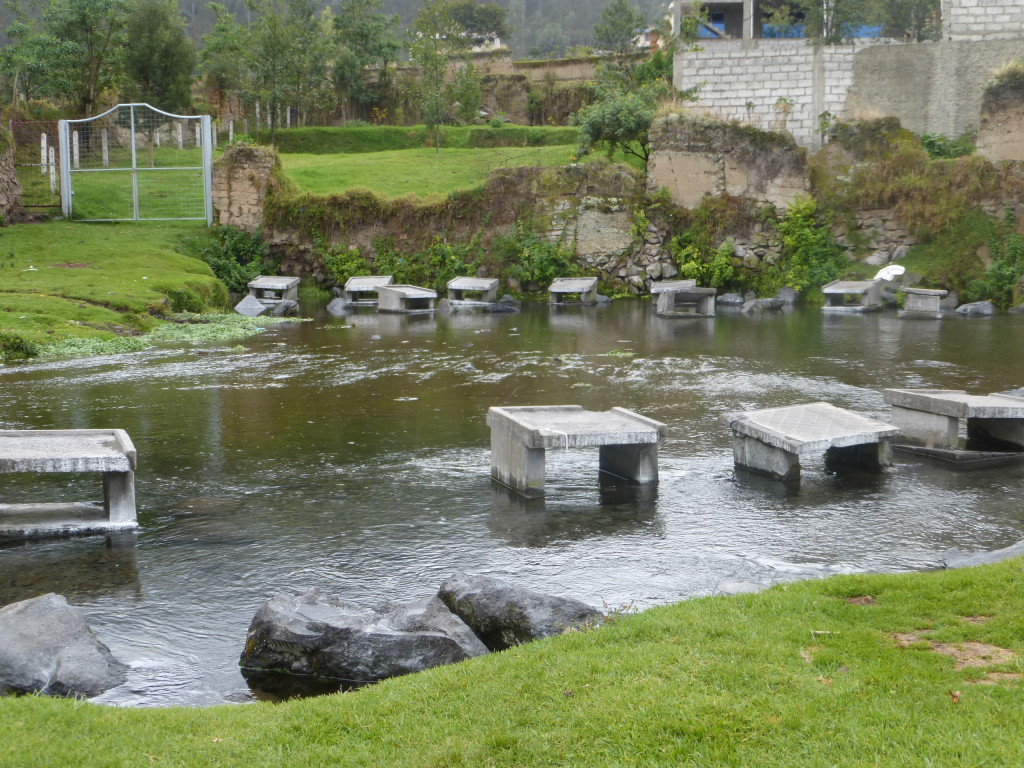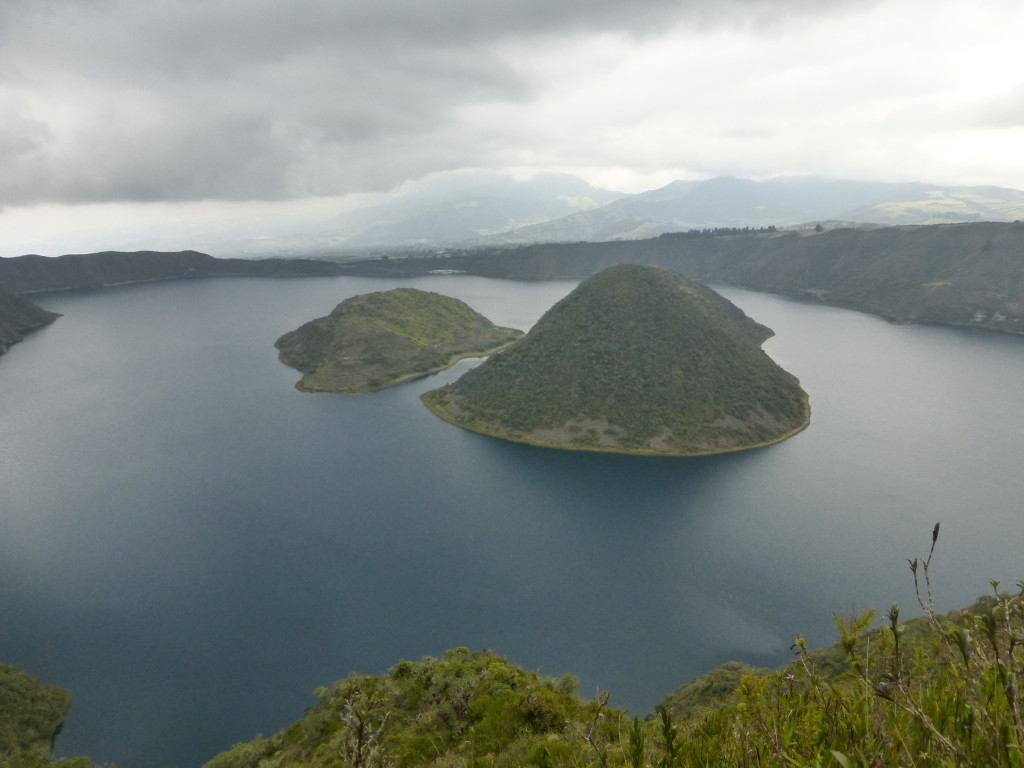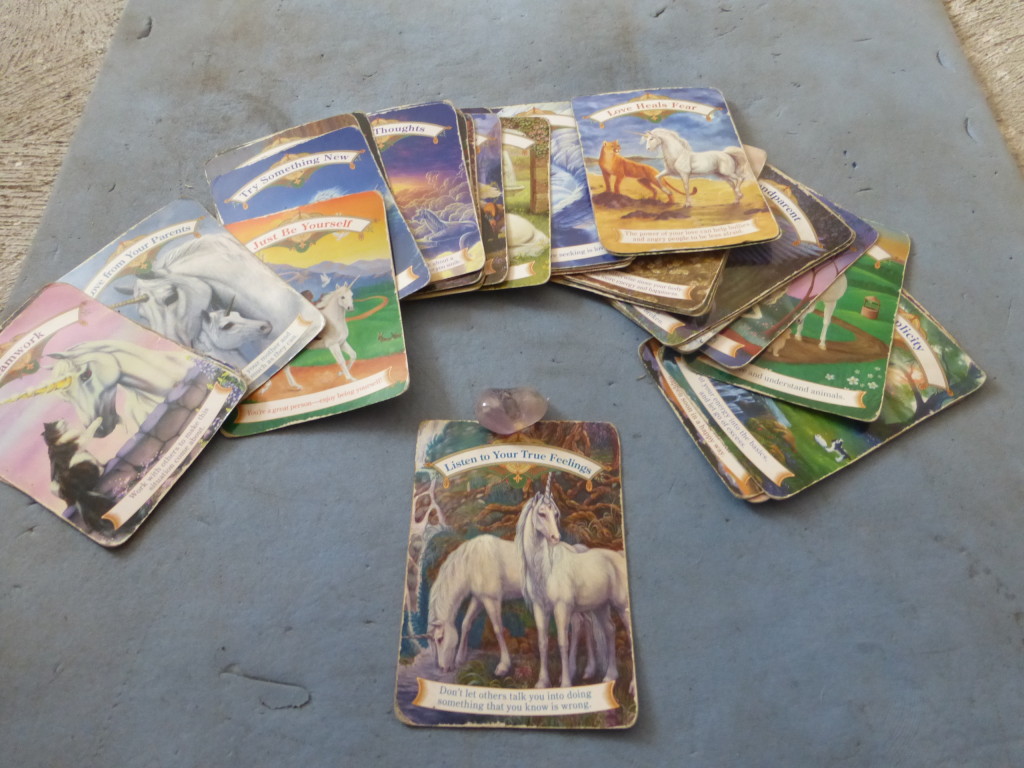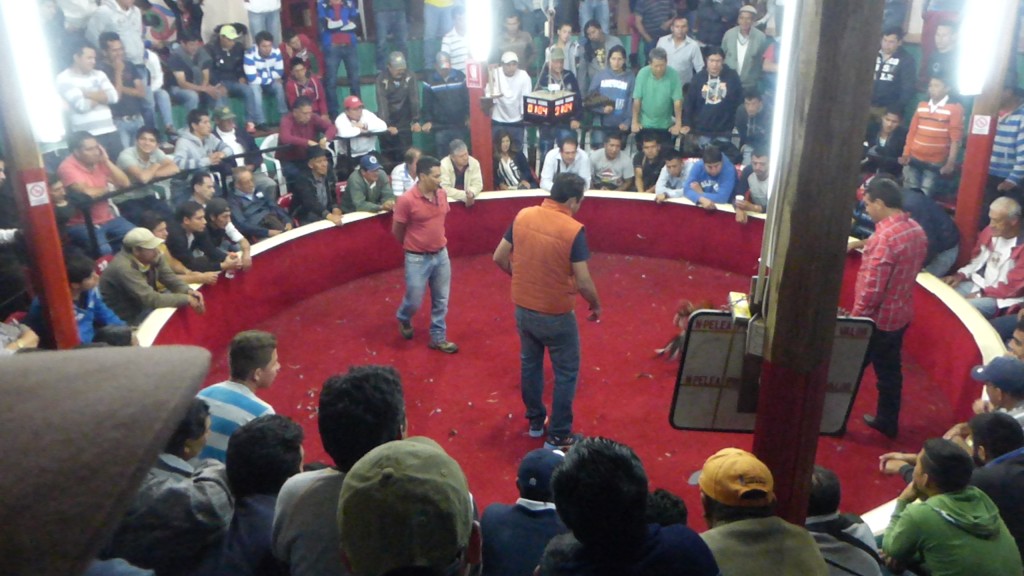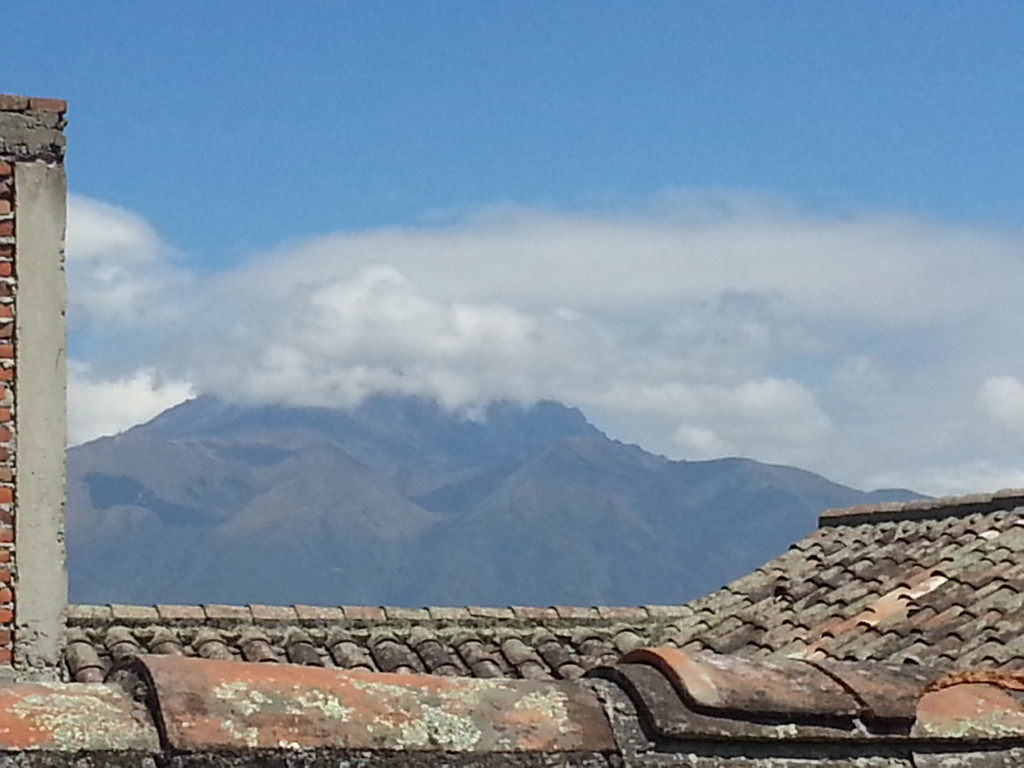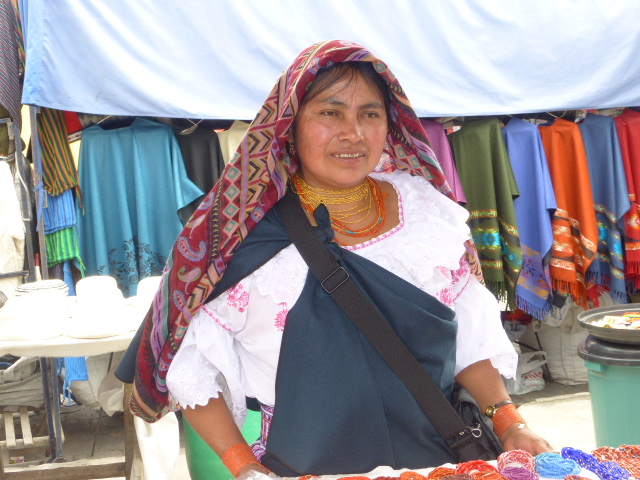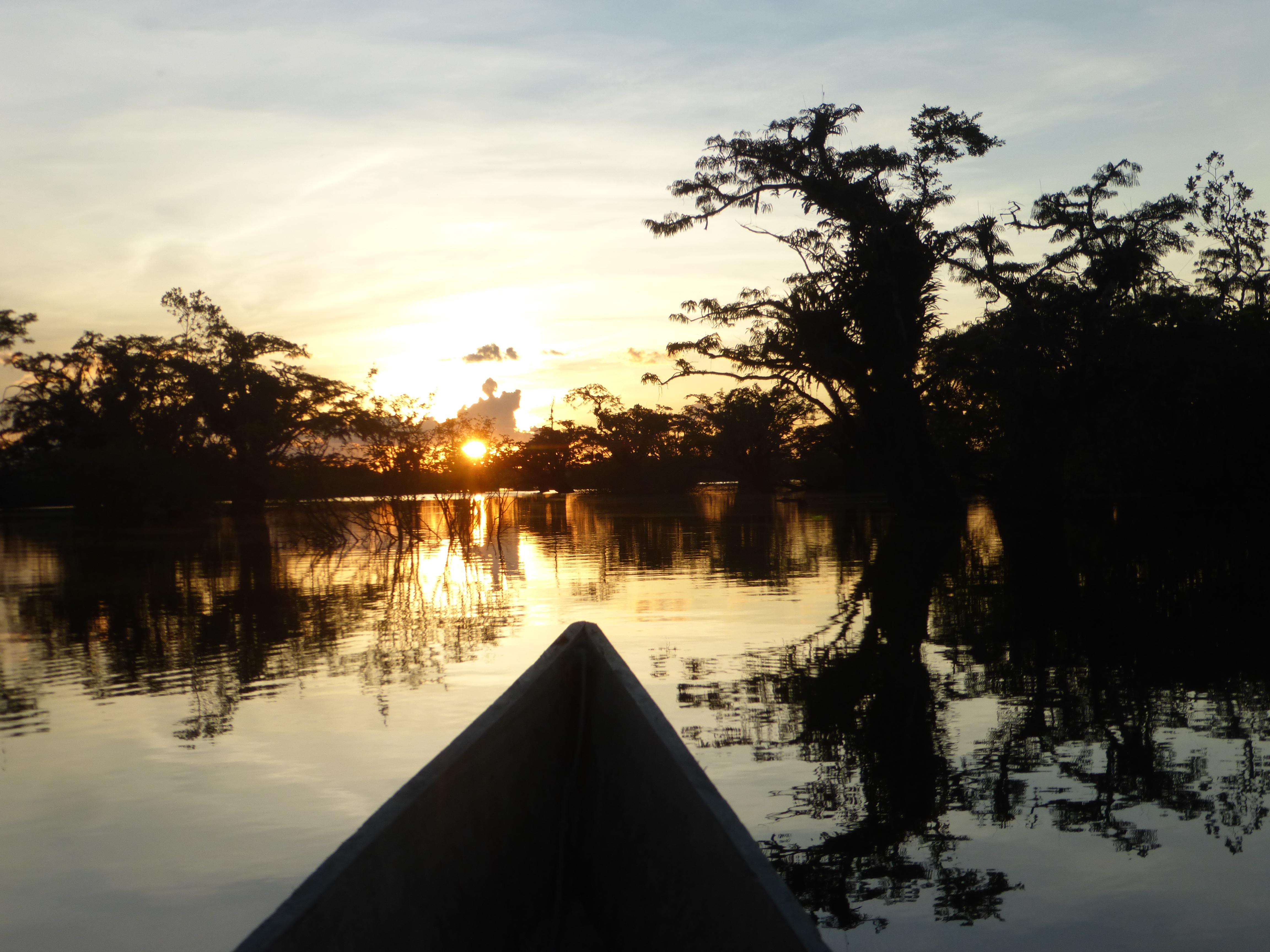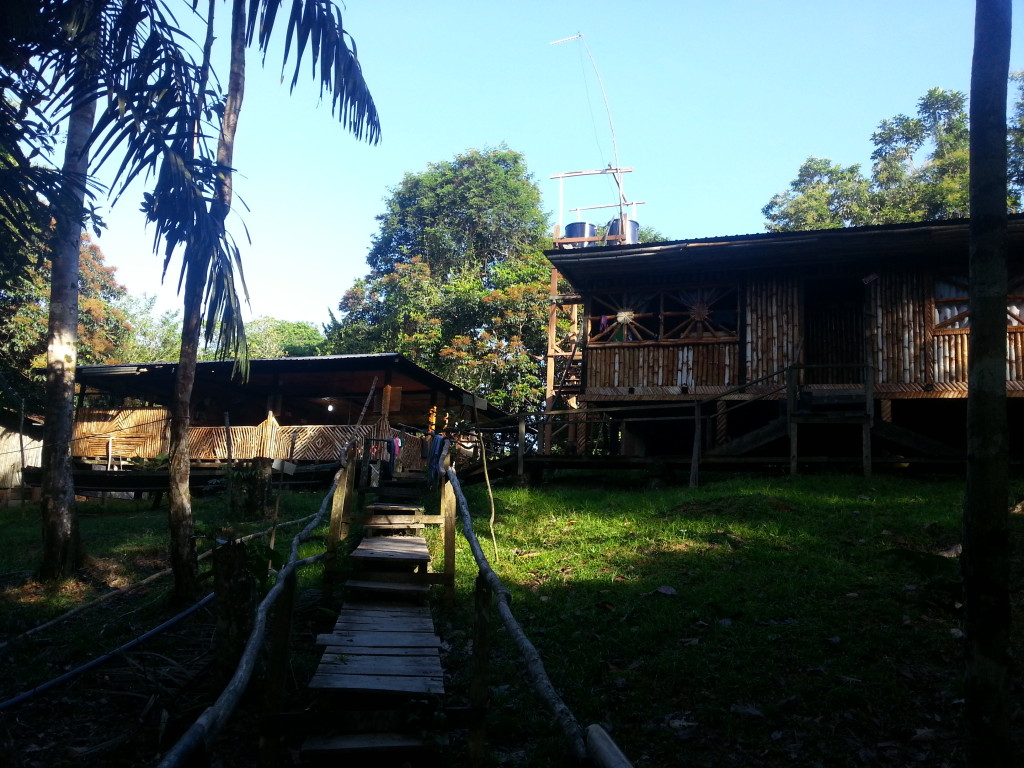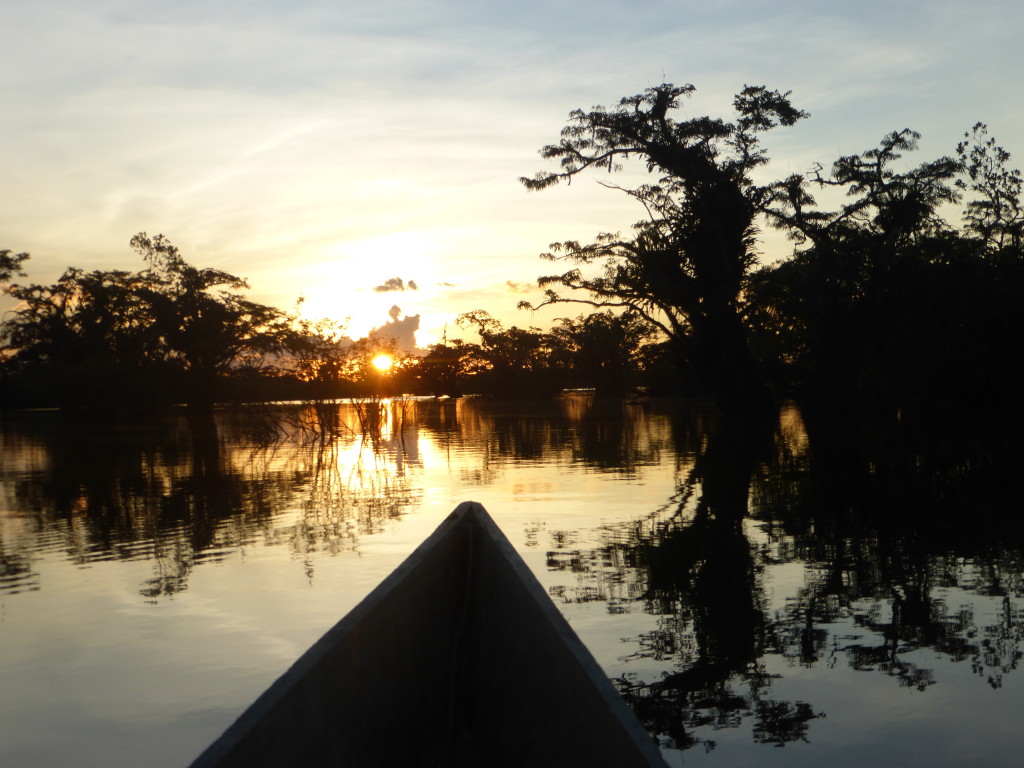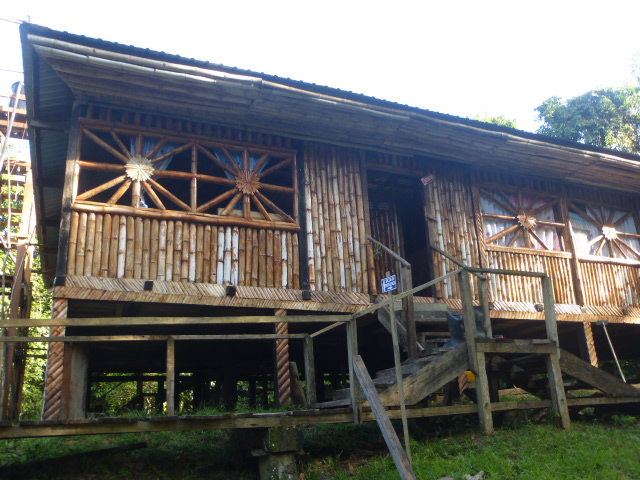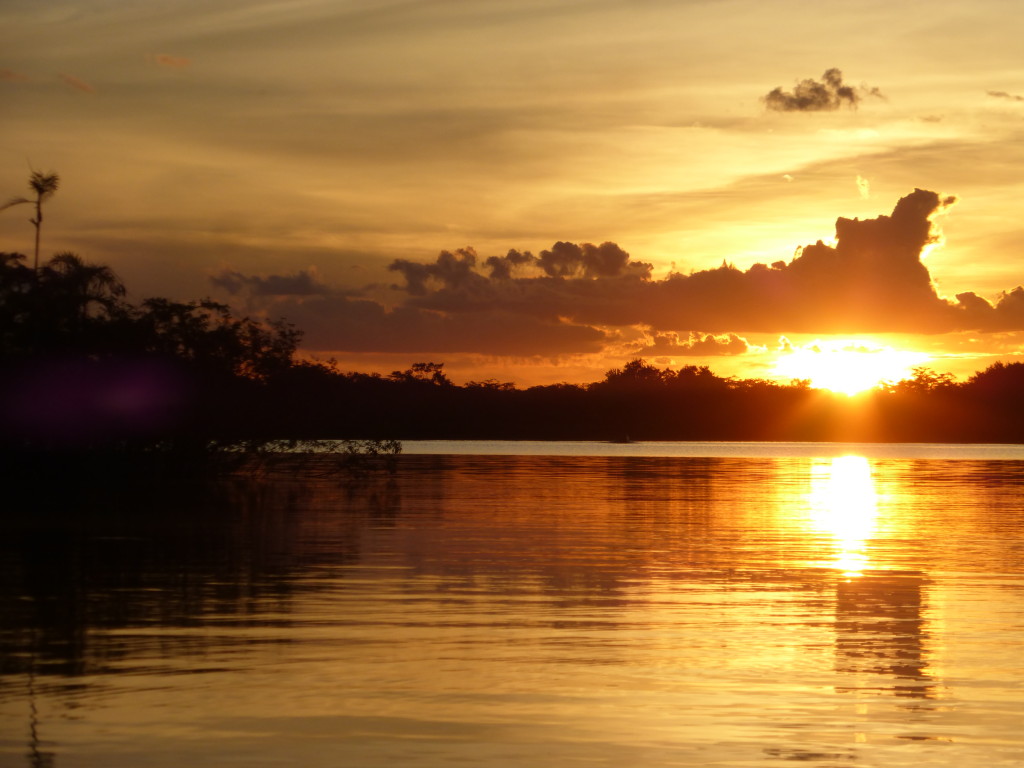
by Jane | Sep 17, 2018 | South America |
This article was first published February 2015 and has been updated.
The ‘Day of the Dead’ and Climbing a Volcano in Quito, Ecuador
Arriving in Quito, Ecuador on ‘The Day of the Dead’ my friend Marcel and I managed to wangle our way into the crypt which is underneath the Basilica.
Normally only open on this one day each year to the relatives of the dead whose remains are interred in little holes in the walls, we tried to look like locals as we sidled past the guards on the door.
Scarlet Jones Travels is a participant in the Amazon Services LLC Associates Program, an affiliate advertising program designed to provide a means for sites to earn advertising fees by advertising and linking to Amazon.com

the crypt underneath the Basilica, Quito, Ecuador
We respectfully spent half an hour or so wandering around the tunnels where families were dusting out the cobwebs in the little alcoves and replacing the plastic flowers, photos and statues of this saint or that virgin and generally just giving everything a bit of a spring-clean.
It was very different to the bright, colourful ceremony that we had passed in our bus earlier that day up in the mountains, although I do like the tradition of everybody remembering their loved ones on the same day.
Rather than individuals dealing with their personal loss on various anniversaries of birth, death or Christmas whilst the rest of life goes on around them, the Day of the Dead allows a collective understanding and empathy with others.
As our bus had driven out of the mountain town of Otavalo earlier that morning we had got caught up in a traffic jam outside the main cemetery where the majority of the indigenous population bury their dead.
The roads around the cemetery had been packed solid with people and families laden down with baskets and flowers as whole families decamped to the graves of their ancestors where they held picnics. The picnics which always included the dead person’s favourite food were actually spread out on top of the graves and everybody sat cross legged around.
The ‘Day of the Dead’ which is celebrated all around Central and South America and Mexico is a day of celebration rather than sadness and it was never going to be any more colourful than in that rural cemetery.
To further cement the collective remembrance, at this time of the year many of the shops and restaurants sell little images of people called guagua de pan (bread babies) and a thick, gloopy purple, slightly unsettlingly warm drink called colada morada (the drink is made of corn and blackberries). Both of these seasonal treats are devoured with relish everywhere.

guagua de pan; treats for the Day of the Dead in Ecuador
Reflecting on the previous five years.
As I update this article nearly five years after I had first published it, I reflect upon how my life has turned out.
Arriving in Quito after 3 months in a volunteer placement in Peru I was a totally confused solo traveller. My personal life was in tatters and my self-belief was at rock bottom. I often pose myself the question….’what will my life look like in 5 years time’…and I vividly remember doing just that when I was in Ecuador.
I never take things for granted and I know that I got to the place in my head where I am right now with a lot of determination, constant questioning and with the support of some truly amazing friends. South America is edgy, dangerous, overwhelming and bursting with life and it was certainly a baptism of fire for me, then recently divorced and with almost zero self-confidence.
I am now a Mindfulness Practitioner and a published (ebook) author, (click here for my book, Becoming Stronger through Mindfulness), I support and guide others along their paths of self-discovery and I continue to travel.
At the end of this article I will post some useful links to resources that you might like if you are about to head off on your own journey – and if you are not quite ready to do that yet and you would like some guidance about how to learn to believe in yourself again, drop me an email. I would love to hear from you.
Things began falling into place for me in South America and one day in Quito when I was out for lunch I met a lady from Canada who was visiting the city. It now always makes me smile when this happens because one of my main worries before I set off on my adventures, and that of most solo travellers is of how you will meet people when you’re on your own; but back then, I didn’t realise how frequently this would happen.
I was extremely grateful when this lovely lady simply came over and asked to join me at my table. The following day Sudha and I agreed to meet so that we could ride the cable car together – and there I was, no longer a frightened solo traveller
In the end we didn’t take the cable car as there was incredibly low cloud over the entire city but we went off for a morning’s shopping in a large craft market and drank some more of the purple colada morada. Quito stretches the length of a long narrow valley and in just about every direction there are mountain peaks, volcanoes and clouds.
There is something so special about the clouds above the Andes. I don’t know how the sky can appear to be bigger and more expansive but here it does, and because in the mountains you are high up, the clouds sit lower over you.
They can certainly affect the mood of the city trapping the air in when they press down grey and menacing, or stealthily creeping and flowing down the surrounding mountains like soft grey rivers of fog or, when there are no clouds at all, it’s as if your spirit is free to soar and fly up and away into the universe beyond and here I was enjoying it with a lady that I had only recently met and looking forward to my next destination.

Quito far below the Pichincha volcano in Quito
Climbing the Pichincha volcano, Quito
However, I’m getting all poetical and I digress yet I still have to tell you about my last amazing day in Ecuador. Marcel and I decided to climb a volcano. We were joined by Rachael who was new in town and staying in the same hostel as us and luckily for us the clouds were way up high on the day that we set off for the cable car called the TeleferiCo.
Quito, the capital city of Ecuador sits at an altitude of 2800 metres and is the highest official capital city in the world. It has more than 1.6 million inhabitants…and it literally sits around and up the sides of an active volcano which last had a significant eruption as recently as 1998.
These South Americans are a hardy lot and they don’t let a little thing like an active volcano bother them – they have even built a cable car system up the side of this one!
Unlike many other cable cars in Latin America such as those in Medellin or Manizales, this cable car in Quito has been built mainly for tourists and it whizzed us fast up the side of the volcano. Or at least it was fast once we’d got onto the thing. Rachael and I had to restrain Marcel who with his German scientific mind could not believe the method by which we had to get onto the system.
In fact there seemed to be no method. Despite the steadily growing queue, if you wanted a whole cabin to yourself then you could have a whole cabin to yourself and damn everybody else behind you! In the end, Marcel cracked and escaping the clutches of Rachael and me he jumped the queue and strode into a cabin with a family who had hoped to have it to themselves.

the summit of the Pichincha volcano is the furthest peak
Once onboard the Teleferico it whisked us up to 4,000 metres and some absolutely stunning views of the city. The ride costs twice as much for tourists as locals and is quite expensive by South American standards and in my opinion you shouldn’t bother going unless you have a clear day. But we were lucky and we had a stunning wide-open sky kind of day and we were not here only for the ride. We were here to climb a volcano.
It started out just like a walk in the park. But an altitude affected heart thumping, heavy-limb uphill sort of a walk in the park.
A grassy ridge led us up and up for more than an hour and very gradually the sharp craggy rocks of the summit came into focus.
People use this volcano as a training ground for altitude and groups of runners – runners!!! – I could barely put one foot in front of the other at this altitude – groups of runners puffed past us. In the cafe there was an oxygen bar where, for a few dollars you could buy time at an oxygen point and sit with a mask on and revive yourself.

the scree slope – great fun coming down the Pichincha volcano
I am never entirely happy with heights and a couple of hours we were faced with the steep side of the sharp peak. Here I have to thank my two friends who encouraged me up – at times using hands and feet and climbing up the rocks.
It was tough going but we passed people on their way down who told us that the effort was worth it. The clouds began to swirl down around us and I was a little afraid of getting lost because in some places there was no obvious path, but onwards and upwards we went.
And finally, after much scrabbling, we were there on top of the world. The clouds lifted and swirled and allowed us to see Quito, just a large splodge of dusty colour below and we sat and caught our collective breaths.
It was amazing to think that we were stood on the summit of an active volcano, 4000 metres up in the sky – but we also knew that getting down was not going to be a piece of cake either.

we made it – the summit of the Pichincha volcano in Quito
But there was a quick option to get down part of the way. Once past the spiky rocks which were very slowly negotiated, we bypassed the zigzag path and launched ourselves off down the scree slope. This was an almost sheer, almost smooth slope at a steeper angle than 45 degrees and was made up of soft sand and gravel with the odd clump of grass or rock to add an element of danger.
At the top you take a deep breath and you launch yourself using whatever method best works for you. Crouch down on your heels and scoot down the hill using your feet as a sled, or bounce down; leaning well back into the mountainside taking giant-sized slithery steps and all the time being very careful not to catch your boot on a misplaced hillock which would cause you to face-plant the gravel.
We all obviously made it down in one piece and we caught the cable car back down through the thick fog which had now swallowed up the entire city.

heading back down the volcano in Ecuador
And then I was climbing into my bunk in the Minka Hostel for one last time before I would take a cab to the airport and my flights down to Brazil.
If you are thinking that your life is somehow stuck but you can’t quite put your finger on it, or you have demons that you need to fight before you can move forward, you can get my book here – Becoming Stronger through Mindfulness or trial my self confidence builder, the Smash the Pumpkin Project for a month, click here.
If you are ready to travel yourself; when I was in Quito I stayed at the Minka Hostel – get the latest prices and details here. I bounced in and out of this hostel for a couple of months because it had such a friendly and welcoming atmosphere. I love the Lonely Planet Guide books – you can get many of them online now too so that you don’t have to carry them around in your backpack – and talking of backpacks I STILL love my [easyazon_link identifier=”B06VVR23DX” locale=”UK” tag=”scajonblo0e-21″]Osprey Farpoint 55 backpack[/easyazon_link] which has been all around the world with me
If you enjoy reading about my adventures, do follow me either here or on Facebook. Click on this link and I will also send you a virtual postcard with the odd newsletter attached every month or so.
And do take 10 minutes to drop me an email or let me know in the comments what you are up to and what you thought of this article.

the hike up the Pichincha volcano started off fairly easily
This post may contain affiliate links and/or references to our advertisers. We may receive compensation when you click on or make a purchase using such links

by Jane | Jul 4, 2017 | Hotels, South America |
(Content has been updated since the post was first published in April 2014)
My bus rolled south out of Quito. As usually happens in Ecuador the driver stopped at every cluster of cabanas so that vendors could climb on board, selling everything from newspapers to medicines making it a slow, but interesting trip. I bought a little bag of strips of green mango with salt to keep me going on the journey. It may sound weird but it works! I was on my way to Latacunga from where I wanted to visit the Quilotoa volcano crater lake.
Pin this image to save and share this post

Latacunga and Quilotoa
South of Quito the road trundles down a wide flat U-shaped valley with the sides rising to mountains lost in the clouds. Cows grazed peacefully, boxes of beehives were in the fields and everywhere people were working the land.

Cotopaxi volcano is in the background with snow on its peak
Ecuador has more than thirty volcanoes, eight of which are considered active and I was heading south on the road known as the Avenue of the Volcanoes. Latacunga is a town which sits just off the Pan American Highway and I was planning to explore the area and to do some writing away from the hustle and bustle of Quito.
Latacunga
I trekked up from the bus terminal and plunging into the narrow streets, for once I had some luck and I found my hotel quite easily. If you are a regular reader you will know that I am always getting myself lost.
You can avoid this yourself by getting a decent guide book before you set off:- check here for the best offers from the Lonely Planet Guides

The courtyard of the Villa de Tacvnga
When I checked in to the Villa de Tacvnga (click here for up to date booking information), my immediate observation was one of calm and tranquility compared to the noise and chaos in the street outside. A handful of people were dining in the large central courtyard which was draped with canopies and offered a welcome shade. The rooms were built off balconies that ran around a smaller second courtyard in the Spanish Andalusian style and there were pretty tiles on the floors.
I was really lucky to be given a family room – which had a double bed and a single and bunk beds; all with fleecy blue throws over them and two windows dressed with very nice gold curtains. The towels were bundled up with blue ribbons, there were chocolates on the pillows and complimentary bottles of water on the side. The whole place was extremely tastefully decorated, and as I have already mentioned, peaceful.

My welcoming bed
I would also soon discover that the bathroom had a VERY powerful hot shower, there was a hairdryer and an excellent selection of channels to choose from on the television.
The villa, which once occupied a much larger area than it does now, was built between the seventeenth and eighteenth centuries for the Marquis of Miraflores and now as a hotel it contains a couple of suites and many lovely rooms.
I asked whether the hotel staff could recommend a tour guide as I wanted to visit Cotopaxi or preferably the crater lake of Quilotoa during my stay. At this stage in my travelling adventure I wasn’t quite brave enough to find a local bus all by myself, but the hotel staff contacted and arranged a local guide for me.
Knowing what I know now I would certainly make the bus trip myself, although at least booking with the guide I had the opportunity to meet other walkers on our trip and our minibus stopped several times along the way and the guide explained what we were looking at.
If you would like to know how you can make the leap out of your comfort zone and take your own journey from the safety of your own home you can sign up to the Smash the Pumpkin self development course – Click here for more details
The Quilotoa Volcano Crater Lake
I had a very filling breakfast of fruit, bread and scrambled eggs in the sunny courtyard. There was fresh raspberry juice and strong coffee and then I was met by the guide and taken to join four people who were waiting for me in a large Land Cruiser.

the sunny courtyard
Diego drove us up into the mountains for nearly two hours to the little town that nestles just below the rim of the crater of the Quilotoa volcano. I know that I bang on and on about the scenery in South America but it really is something spectacular and my camera just cannot capture the sheer scale of it. The roads fold around the mountainsides for miles and miles, climbing high through passes and then swooping down and round, the clouds bubble up and shroud the peaks, and here and there were large piles of dried brown grass which looked like old fashioned hay stacks.
These turned out to be homes called chozas and were mostly roofs over short wooden structures but were the farmhouses of the indigenous people.

a choza with its haystack like roof
The majority of the women here wore colourful skirts, long white socks, shawls and bottle green trilby hats, often with a peacock feather stuck in the side. One of them told me that the blue of the feather signifies the blue of the sky, the green hats the land and the brown for the soil. She was telling me this whilst sat on the rim of the crater and having a conversation on her mobile phone with somebody at the bottom by the lake.

pausing for breath – mobile phone clutched in her hand
Leaving the car park I climbed to the top of a rise and wow, what a sight. The morning sun had turned the lake’s water a brilliant blue. Edged by the steep crater sides and with the snow covered peaks of Los Ilinizas and Cotopaxi in the distance, it was a magical sight.
I slowly hiked down to the lake but I declined the option to kayak on the water and I also declined the option of riding a mule or a horse back up. I did wonder about the wisdom of that decision on more than one occasion as I struggled with the sheer climb on loose, sandy soil and the altitude (the lake is at a breath-stopping 4000 metres), but eventually, encouraged by my new friends from Spain and Bolivia who were on my tour and chatting away in my own version of Spanish, I staggered to the top.

The crater lake of Quilotoa
The crater measures fifteen kilometers around the rim, and from the rim to the water is four hundred meters – although the zig zag path measures one kilometer and as I have already mentioned it tops out at a breath-taking altitude of four thousand meters. The depth of the water at the edges is two hundred and fifty meters deep and in the centre – who knows!!! It’s deep. And due to the sulphur (which we could actually see bubbling at the sides) nothing can live or grow in it.
After some time spent at the top, chatting to some local women we ate a very tasty lunch inside one of the hostels, warmed by a wood burner stove and sopa de zapallo (pumpkin). We had to wait for two of our party to return from their trek around the rim but I just had to keep popping back to peep at the amazing view for one more time.
Driving back we had perfect views in the almost clear skies of the massive volcano Cotopaxi – the highest active volcano in the world, and the twin peaks of North and South Ilinizas. These were once one volcano which exploded and blew itself into two and now have their own lake high between the two.

Cotopaxi volcano
We also stopped to see the Canyon del Rio Toachi, formed in a previous volcanic eruption. The steep sides gashed through the land and a heat haze shimmered up and out despite the now brisk wind which was blowing.

Canyon del Rio Toachi
Back at the hotel I was welcomed once again by Nelson W. Chanatasig who was interested to know how my day had been. You can check out the rooms and the latest prices here, but what the web site doesn’t convey is the friendliness and professionalism of the staff. Sr Chanatasig and his right hand team of Juan and Belen have createe the most welcoming atmosphere in a place of sophistication. And this wasn’t just put on for me either – I watched and listened as I went through reception and they were lovely with everybody.
Just before I left, the manager took me behind the scenes to the kitchen which contained the original ovens that were nearly three hundred years old and he showed me the little yard at the back which contained the well, complete with its stone water filter. This stone shaped bucket would have been filled with sand and charcoal and the well water filtered to ensure that it was clean. The hotel has been lovingly restored and there are plans to make further improvements to the building.

a little bit of luxury
Latacunga is a small town but one very good reason to visit is to stay at the Villa de Tacvnga in its perfect location on the Plaza of Santo Domingo, and to make the journey over to the crater lake of the Quilotoa Volcano. Many intrepid travellers also climb the Cotopaxi volcano but that, I am afraid to say, is simply way too far outside of my comfort zone!
The best bits:
- The tranquil atmosphere at the Villa de Tacvnga and the overwhelming feeling of peace
- The extremely friendly staff: Nelson W Chanatasig, Belen and Juan
- The beautiful building with the stone arches and courtyards
- The jaw-dropping views of Quilotoa
- The bus journey to and from the crater lake and the stop at the Canyon del Rio Toachi
If you are planning a trip to Ecuador, don’t forget your guide book from Lonely Planet which you can get via this link – Lonely Planet Guide to Ecuador and I can’t stress enough the importance of taking out decent travel insurance before you go anywhere (I use Alpha Travel Insurance which is not so expensive as some)
Note:- Whilst I received complimentary accommodation at the Villa de Tacvnga this did not influence my opinion or review in any way. I have portrayed an honest picture of my stay.
There are affiliate links within this article: from which I may earn a small amount of commision if click and subsequently make a purchase. There is no additional cost to you

by Jane | Feb 3, 2015 | Ecuador |
I survived my pickpocketing at the border but one hundred dollars lighter and I jumped on a bus to Otovalo. I had been here before but I wanted to break my journey and this town warranted a better look around.

Otavalo
In the end I stayed here for ten days in two different hostels so I really got a feel for the place and its residents, bouncing in and out of Quito in between. Since my first visit to Otovalo there had been an earthquake and the road through the mountain is currently closed. It now takes twice as long to get to the town from Quito on a very long winding route which has had a severe impact on the number of tourists who pop up from the capital for the day.

Otavalo, Ecuador
Bt it is worth making the effort and it is worth staying longer. Otavalo has got, of course the crafty, artisan market – the biggest and arguably the best in Ecuador and it also has a weekly animal market. There are TWO volcanos looming over the town and some beautiful towns and villages within striking distance. It has lakes, mountains and a scenic railway line passes quite close by.
I spent some quality downtime here writing and walking in the countryside and I also I met a British lady who had repatriated herself to the town and we went out together on a couple of day trips.

the mountains of Otavalo, Ecuador
We visited the nearby waterfalls at the Cascada de Peguche which are considered a sacred site by the local indigenous people and who hold ceremonies under and near them.

Cascada de Pegucha
We visited the large lagoon, the Lago San Pablo on a very still, foggy day, a day when dampness hung in the air and deadened all sounds and sucked the life and colour out of the landscape. We saw the little pond formed where the stream tumbled down from the mountains and where the ancient stone washing stones stood. The indigenous ladies still gather here in this pool to wash their clothes, pummelling them on the rocks, and chattering and passing the time of day while they sit or stand in the water.

washing machines
Another day we trekked for five and a half hours the fourteen kilometres around the rim of the Laguna de Cuicocha with its two forested humps of islands hunched in the middle and is so named for the guinea pigs that the islands are supposed to resemble. That trek was actually quite tough as in some places where the path climbed very high above the crater, and the gradient rising from 3100 to 3400 metres but it was very beautiful. The path wound in and out of trees and each time it took us back out above the lake our viewpoint had shifted and we had a different perspective. The lake changed from a moody, glassy black which reflected the mountains to molten mercurial silver and all shades of blue/green in between.

Laguna de Cuicocha
We had rain, sun and hail thrown at us while we walked and then when we finally reached the road we had to hitchhike back to the town as there was no public transport. That in itself was an adventure as we climbed into the back of a truck who had already picked up a lady and a drunk guy who kept retching in the corner – and thenthe truck got a puncture too.

waiting patiently for the puncture to be repaired
Julie the British lady that I had met was a masseuse and did something with crystals. I had a lovely massage and she read my cards (something like tarots) with uncanny accuracy but the jury is still out on the crystal stuff. I supposedly had all my bad energy taken away from me, but following subsequent events she would probably dispute that!

The cards. Uncannily accurate
On one of my return trips to Otavalo (by now my third visit) I was accompanied by the uber intelligent Marcel from Germany who I had met in Quito. My trip has been educational in more ways than one but before I set out I never expected that I would learn about black holes, quantum physics and tons of other sciency stuff. And all credit to Marcel that despite my blank looks he didn’t tell me that I was completely stupid and he did explain a lot of stuff in a way that even my non-scientific mind could grasp (I gave up on physics in school on the day that we made patterns with a magnet and iron filings. What use was that ever going to be in my life?)
One evening we heard that there was a cockfight going on. This is legal in Ecuador and most towns have an arena. We debated the ethics of going and then decided that, provided we didn’t have to pay an entrance fee, we might at least pop our heads in and see what was going on.

A cock fight – with birds strategically placed behind a post
It wasn’t as bad as I had thought – I actually found it more interesting watching the crowd watching the fighting than the birds themselves. It was similar to a boxing match in as much as there were timed segments, the referree would frequently pause the match and there was some big money changing hands among the crowd.
We stayed for just twenty minutes which was quite enough, and I would not go again but just after we had left we were told that there had been an immediate kill which had earned the owner of the bird a huge two thousand dollars.

waiting for the cock fight
I have to ‘fess up to not being particularily politically correct in several respects because I also visited the animal market twice as well as the cock fight. And they were both very un-pc. But interesting. And quite legal and normal in Colombia. In the market there were all sorts of animals changing hands, from tiny little chicks and puppies to pigs, goats and bulls. Some very grand cockerels were on display which we later learnt were being sold for cock fighting and a man was very strangely leading a randy bull around on a rope.

patiently waiting for a sale
Daniel from Cuenca had joined us in Otavalo by now and the three of us spent a hilarious half hour watching the bull unsucessfully attempt to mount the other bulls that were tied up to the fence but he only succeeded in spraying everything and anybody who was stood too close with sperm. Very prurile and childish but ever so funny. Daniel actualy recorded the whole thing if you are interested!

calendar shot – October
Daniel had joined us in Cuenca for a music festival which I had been reliably informed by Julie the Brit would take place at the sacred waterfall and which would be a moving,s spiritual affair. Was it heck!
It was not at the waterfall at all, but in a large, drafty sports hall. A bevvy of bands took their turn on stage but none of the music was spiritual – it was all a jazzed up version of the music that you can hear on many high streets. Pan pipes accompanied by drums and guitars didn’t really do it for us since we were expecting such big things. I have to say that it was a dreadful night – not least because a man who was sat next to me shoved his tongue in my ear and told me that he loved me (I moved pretty sharpish). Marcel thought that the whole visit to Otavalo was hilariously funny and Daniel couldn’t wait to leave Ecuador (I should point at that neither were the owner of the out of control tongue)

volcano hidden in the clouds
One nice thing about Otavalo was that I also had the chance to meet up with Ashley from the States who I had previously met in Banos. I was told before I started to travel that there was a well worn path that travellers followed but I never believed that I would re-meet the same people again. After all, the distances are so huge, but people swap Facebook addresses and hook up again. If somebody can recommend a hostel or a good place to visit that can sometimes be safer than winging it (not always as some of the best things that I have seen or done have been when I have got lost)
Since my return to the UK after my trip I have even met up with fellow travellers here too and that is fantastic because you have the connection and the shared memories.

a lady in Otavalo market
Leaving Otavalo behind on November 2nd Marcel and I in our bus drove past the cemetary where the indigenous population bury their dead. It was packed. The roads around it were solid with people and families laden down with baskets and flowers because it was ‘The Day of the Dead’ which is celebrated all around Central and South America and Mexico. It is a day of celebration rather than sadness when whole (usually indigenous) families decamp to the graves of their ancestors and hold a picnic alonsgside their resting place, complete with their deceased relatives favourite foods.
Arriving back in Quito we also witnessed the way that some of the city folk commemorated the Day of the Dead. Enter your email address and follow me to ensure that you don’t miss my my next installment or like me on Facebook or follow me on Twitter

by Jane | Dec 16, 2014 | Destinations, Ecuador |
On my second day in the jungle I woke early as the sun streamed in through my mosquito net. The windows were just open wooden frames and from my bed I could hear strange noises. Getting up to investigate I was enthralled to see a troop of capuchin monkeys playing in the trees outside my window, grooming each other and daring each other to go near the dining area, when there were yells from the kitchen as one of the braver monkeys dashed over the low wall and stole a banana off the table.

early morning visitors at our camp
After a massive cooked breakfast I set off with Javier into the jungle on foot. I had been given welly boots as it was muddy in places and we wandered for miles and for hours. It was everything that I hoped and expected with the sunlight filtering down through the canopy high above and Javier stopping very frequently to explain the medicinal plants and trees. He pointed out insects and birds and then we found some more monkeys just getting on with their lives high above us. We heard howler monkeys and exotic birds and Javier showed me some MASSIVE spiders and creepy crawlies, I licked milk of magnesium from a tree where he had made a small nick in the bark and watched as he found and burnt natural incense and a twig which smelt just like tobacco.

monster spider webs
I shut my eyes and stuck my tongue out as instructed,expecting Javier to sprinkle some sap or water onto it as he had been fiddling about with a leaf and a tree trunk. Umm – lemon flavour water. Umm fizzy lemon flavour water. Quite tasty. Ummmmmm – something crawling up my nose! Fizzy lemon flavoured ants!!!!!!!!!!!!! While I spat and blew my noise Javier was bend over with laughter, but I do have to confess – until I realised that they were ants they were actually quite tasty.

and monster spiders
At times our walk resembled something out of a Disney film or Avatar with massive orchids bending under their own weight suspended from tree trunks, and clouds – and I do mean clouds of butterflies swooping and hovering around everywhere, some of them as big as my two hands held with fingers outstretched. There were bees, ants and wasps, and a warm humidity muffled the sounds. It felt like we were walking inside a grand hall of tree trunks and leaves.

a clearing in the jungle canopy
Eventually we came out to a little beach on the edge of the lagoon and we sat in complete peace until the canoe with the others came and collected us and took us back to the lodge. After an excellent and huge lunch I dozed off in a hammock for the afternoon, lulled gently to sleep by buzzing insects. After our siesta we went out in the smaller canoe and paddled gently around the lake. We stopped and listened to the cayman gulping and grunting somewhere in the the thick undergrowth and then as the sun launched itself over the horizon of trees we again swam in the warm lagoon.

no need to steal – bananas are left out for the monkeys
After dinner Javier led me deep into the dark of the jungle and with torches flashing on the trees and the ground we discovered a whole different world of insects, frogs and birds. When we had walked for ages we put the torches off and sat in total darkness. The starlight couldn’t penetrate the canopy and we sat like this for about twenty minutes in silence. It was comforting and the dark wrapped around us like a security blanket yet a little disconcerting as I wondered what was out there in the dark watching us. I believed I could see orange and red eyes staring out at us from between the tree trunks.

La Hormiga Lodge
Time was flashing by and on the third day after breakfast with the sun shining and turning the surface of the lake to mercury Javier and I set off on another big adventure. We paddled and we paddled and we paddled. Across the Laguna Cuyabena up the creeks and past the sunken forests, around Cayman Cocha (lake) and then we struggled against a faster current in a a muddy brown river, finally bringing the canoe to rest in a shady spot among some reeds. Looking nervously around for those pesky caymans we got down to fishing with a cane, some twine and a hunk of meat.

patiently fishing in the shade
We didn’t have to wait for long before the cane bent and up came – and an empty hook. Several times we reloaded until eventually Javier hooked a snapping , growling piranha. Yes, it really did snap and clatter its teeth and despite being hauled out of the water it was totally focused on trying to devour the meat and yes it did growl too. It was the rojo (red) variety and it was really quite stunning although we were careful not to get our fingers too close as we posed for photos and then gently released it back into the water.

a red piranha
After a rest and a recovery from our frantic paddling we continued up the river until it opened out into the Laguna Grande. What struck me on this trip was the total peace. Yes there was noise but it was natural. There was total unadulterated by man type of silence. Like at Wadi Rum in Jordan and at the top of Machu Picchu I felt linked to this planet of ours, a spiritual, primeval connection. Connected and a part of the larger global picture; feeling compelled to make my time here in this world count in any small way possible.

simply magical
We ‘parked’ our canoe under another shady tree and after another spot of piranha fishing (we caught a white piranha this time) we just sprawled in the bottom of the boat and rested for a while, Javier listening to his music through his earphones and I counting my blessings for fate/opportunity/my guardian angel which had led me to this little bit of paradise.

breathtaking
We evenually paddled back in silence, back through the eerie trees growing out of the lagoon, parrots in the trees and the endless fluttering butterflies. As we drifted down the muddy brown waters escorted by smudges of insects and with the plops of fish jumping around us I felt my energy levels recharge and my love for life given a new surge.

possibly my most favourite place on the planet
For my last evening at La Hormiga I had a special treat. After dinner, three of us went out in the motor canoe and armed with torches went looking for cayman. I had heard these creatures as we had paddled along the rivers but now was my chance to see them. the lagoon took on a whole new personality in the dark, with shadows and intrigue. I very quickly lost my bearings as we went up and down the channels but Javier skillfully navigated his way. Every so often he would cut the engine and I would hold my breath as the beam of the torches picked out the bright orangey/ yellowy eyes of the stealthy cayman.

paradise
I saw the prehistoric snouts floating around us and once spotted one creature ‘take a ploof’ and with very little noise, push itself off the muddy bank and disappear into a swirl of water in the lagoon. I felt priviledged and humbled to see these ancient creatures and quite a little bit scared to be so close to them.
My final morning I was supposed to get out of bed at 5am and go into the jungle and listen to the birdsong of the dawn chorus and watch the sunrise, but I lay awake most of the night listening to the rain hammering on the tin roof above me. It was still tap dancing down at dawn so whilst Javier was more than prepared to lead me, I decided that it would be a soggy damp excursion that I could do without.

muddy waters hiding cayman and piranhas
After breakfast, we all piled back into the canoe which was loaded with trash bound for the town and the empty petrol cans and we began our journey back to civililisation. We broke down at one point but a fortuitous passing canoe transfered some fuel to us and sadly we had to continue our journey. Back at the little bridge I was I then offered a lift back into Lago Agrio by another guest where I jumped on a bus and headed back to Quito
The Amazonian jungle covers a massive swathe of the planet in South America and differs from country to country with different flora and fauna, indigenous people and cultures and customs.

it may be muddy but it is clean
If you want a to immerse yourself in a place where tourism is respectful and gentle, then get yourself to Lago Agrio and jump off into Cuyebena. I stayed at La Hormiga Lodge which is bookable through Marco Polo Tours and who have various offices around Ecuador and I can thoroughly recommend them.
They were recommended to my by Andres the owner of the Mallki Hostel in Cuenca who is a jungle guide in his own right. I had the option to visit an indigenous community within the jungle as part of my journey but I chose not to do this. My trip was tailored to my requirements and those of the other guests and nothing was too much trouble. Lilia worked hard in the kitchen and gave us filling, tasty meals and the guides – especially Javier were the best. Accomodation was comfortable but built sympathetically with the surroundings. Windows were generally open spaces, the water for the bathrooms and showers came from the lagoon and the hammocks in the communal area were perfect for resting up after a hard days paddle.

just hangin’ around
If you speak English and you are in Quito and you want to volunteer for a few months with Marco Polo Tours, do contact Ivan as he would like somebody to help out in the office there, selling the tours to English speaking tourists, and if you fancy exploring the jungle in Cuyabena in Ecuador do give them a ring or pop in to one of the offices.
Note:- Whilst I received discounted accommodation at La Hormiga Lodge with Marco Polo Tours this did not influence my opinion or review in any way. I have portrayed an honest picture of my stay.
If you enjoy my blog, please ‘like’ my Facebook page – www.facebook.com/scarletjones30

by Jane | Dec 9, 2014 | Destinations, Ecuador |
I know that I keep on banging on that I have found the most perfect place on earth, but I honestly do think that I am getting close. Or at least close to the most perfect natural environment on earth. The Jordanian desert at Wadi Rum and the mountains around Amagá in Colombia have now been pipped to the post by Cuyabena which is in the Amazonian jungle in the north of Ecuador.

trees growing in the laguna
Andres, jungle guide and owner of the Mallki Hostel in Cuenca kindly arranged for me to visit La Hormiga Lodge (The Ant Lodge) and to stay for four days with some of his friends.
Whilst excited, I approached this with some trepidation because I knew that the stay would mean travel by canoe – and I have, or rather had, quite an aversion to water and boats.
My trip didnt get off to a good start when my seven hour bus journey to Lago Agrio turned into ten and a half hours of hell. It turned out that earlier that day a bullion van had been hijacked on the mountain road and blown up and it had reduced part of the road to rubble. As well as trying to repair the road the army and police had a heavy presence and basically stopped everything from moving so our bus just sat by the side of the road in the dark with everybody else for ages.
Anyway, I eventually rocked up in the jungle town of Lago Agrio with just half an hour to spare and I found the travel agency of Marco Polo Tours who were organising my adventure and who have the lodge where I was to stay.
I was checked in and all of the necessary paperwork was completed and then I was loaded into the backseat of a truck and we went sourcing fuel, oil, food and water for the trip. This was followed by a two hour drive into the jungle – as we bowled along the roads I tried not to dwell too much on the amount of fuel that was strapped in the back of the pick-up in huge plastic drums and which had converted us into a giant moving petrol bomb.

all fuel has to be taken in to the jungle
We safely arrived at the ‘bridge’ – the launching point into the jungle. From here transport was solely by water, but first I was given lunch while everybody sorted themselves and the cargo out. EVERYTHING had to be transported into the jungle by the canoes – the food, bedding, building materials and fuel as well as the staff and the guests, and this bridge area was the main jumping off point for all the lodges in this region so it was quite a hive of activity.

The bridge
I was introduced to an Argentinian couple who were to stay at the same hostel for just one night, and then we settled ourselves into our canoe and we were off down the muddy brown tributory on another two hour leg of the journey. Our powerful motor propelled us along, with the guide Javier pausing every so often and pointing out the birds, trees, flowers and eventually whoop whoop – a monkey in the trees above us. I had seen wild monkeys in India but out there among the temples and buildings they are just a pest – here was a real wild monkey in its proper habitat and we were all so excited as we drifted around below it.

the muddy brown tributory of the river system
Eventually the river emptied out into a large lagoon. This was the bit that I had been dreading, but with submerged forests and trees right down to the water’s edge it was so breathtaking I was not scared. I didn’t want the journey to end. It was magical. The surface of the lake was a mirror reflecting the clouds and the trees and whilst it was certainly not quiet with insects, birds and canoe motors there was no hum of traffic, no drone of distant aeroplanes and no other man-made noise.

blindingly beautiful
The sheer magic of the place brought tears to my eyes and I felt really emotional. We reached our little jetty and we made our way up to the lodge and our accomodation. Here again I was pleasantly surprised. Ivan had built the lodge himself and had opened it just four years previously. It could accomodate up to thirty two guests in a variety of rooms where pretty mosquito nets draped over comfortable beds and showers were fed by lake water and heated by the sun.

my pretty bedroom
After a short rest following our journey our little group of three split up, and after being told that I should wear swimwear, Javier and I set back out in the canoe to see the most stunning sunset. There were some of the canoes from the other lodges scattered about the centre of the lagoon and some people swimming in the water. I had assumed that we would find a nice beach area to swim from, but I tentatively lowered myself into the luke warm water to discover that, even in the centre of the large lagoon I could touch the sludgy muddy bottom in places. The water level was receding because we were in the dry season but I nervously swam around – after all the laguna was filled with pirhana fish and cayman.

evening bathtime
It was then, after I had struggled very inelegantly back into the canoe that Javier told me that the pirhanas and other fish fed at the perimeter of the lake from berries and insects that fell in and the caymen in turn, fed on these fish so we were quite safe out in the middle of the lake. I couldn’t help wondering how long it would take creatures that were crawling about on the planet at the same time as the dinasours were roaming around to work out that most evenings a large banquet gathered in the centre of the laguna at sunset and they should maybe make their way there to feast upon the tourists.

sunset at the most magical place on the planet
As the sun set over the forest, the lagoon turned even more magical and beautiful if that were even possible. The reds and oranges were reflected in the perfect mirror surface of the lake, the trees which were growing up from the water became silouhettes and the insects got louder. The large birds and parrots swooped noisily across the lake to roost in the trees on the islands and then suddenly, dark fell and the frog chorus began. When we paddled silently alongside the edge of the lake we could hear the cayman grunting and rustling eerily in the weeds.

my rustic yet pretty bedroom
After dinner back at La Hormiga we found quite a large snake curled up under the stilts of the building and three giant toads hopped around our feet in the dining room catching some of the insects which were attracted by the lights. A generator powered the electric and I charged my camera (a phone was useless here with no wifi) but it was however ‘lights out’ very early to conserve the generator fuel and then it was just us, the dark and the noises of the jungle.
As I got into my bed and I very carefully made sure that the mosquito nets were pulled completely down around me, I reflected on all of the horror films that I had ever seen, where snakes slither in through open windows and then up and inside something as flimsy as a net. Despite worrying for all of ten minutes I was soon fast asleep.
Find out how I got on in the jungle next week. Make sure that you don’t miss out by following this link and ‘liking’ my Facebook page or submitting your email address in the box at the side of this page.
Note:- Whilst I received discounted accommodation at the La Hormiga Lodge this did not influence my opinion or review in any way. I have portrayed an honest picture of my stay















